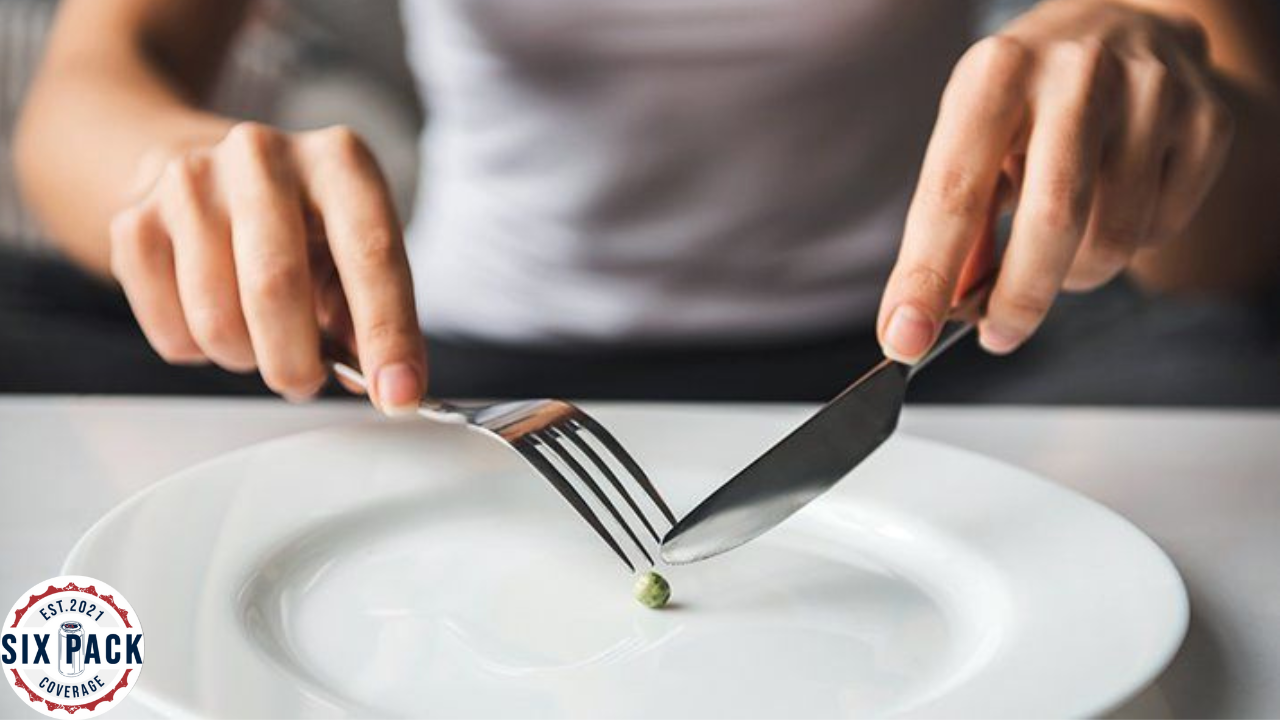Why low calorie diets don’t work
Why Very Low Calorie Diets (500-1000 Calories A Day) Don’t Work
Are you thinking about going on a very low calorie diet (VLCD)?
If so, it’s probably because you understand that the one big secret to weight loss is eating fewer calories.
Because once you understand that you need to eat less in order to lose weight, it’s common to then think “If I eat a lot less, I’ll lose weight a lot faster!”
And how do you eat a lot less? Simple. By following a very low calorie diet.
What Is A Very Low Calorie Diet?
“Official” definitions put it at any diet that is 800 calories a day or less. If you look around, though, you’ll see it defined as anything between 500 – 1000 calories a day.
But honestly? I don’t really care about any of that. In the context of this article, I’m going to define VLCDs like this…
My Definition:
A very low calorie diet is any diet where a person is eating significantly less than the amount of calories they’d truly need to eat a day in order to lose weight at an optimal, sustainable and healthy rate. A more accurate term would probably be an unnecessarily low calorie diet.
Now what does that mean, you ask? It means deficit size matters.
The Size Of Your Deficit Matters
You see, weight loss happens when you eat fewer calories than the amount your body requires to maintain its current weight. This is a state known as a caloric deficit.
The thing is, that deficit can be a variety of sizes.
Let me give you an example.
Let’s pretend some example person maintains their current weight eating 2500 calories a day. In order for a deficit to exist, they’d need to eat some degree less than 2500.
That means our example person could potentially eat…
- 2250 calories a day (a deficit of 250)
- 2000 calories a day (a deficit or 500)
- 1750 calories a day (a deficit of 750)
- 1500 calories a day (a deficit of 1000)
- 1200 calories a day (a deficit of 1300)
- 1000 calories a day (a deficit of 1500)
- 800 calories a day (a deficit of 1700)
- 500 calories a day (a deficit of 2000)
- Or anywhere in between.
And in every single case – regardless of whether their deficit is small, moderate or large, or whether they are on a higher or lower calorie diet – they are going to end up losing weight as long as they are consistently in that deficit.
The only question is… which deficit size is best?
Larger Deficit = Faster Weight Loss
For most people, the main (or often, only) consideration here is which deficit size will work the fastest. And that answer comes down to simple math.
The larger the deficit… the faster your rate of weight loss will be.
And that’s how most people end up on a very low calorie diet. They simply want to lose weight fast, and they realize that the less they eat, the faster it’s going to happen.
Therefore, a very low calorie diet is guaranteed to be the best option for anyone who wants the fastest results possible.
End of story.
Right?
Right??
RIGHT?!?!
Eh, not quite.
The Big Problem With Very Low Calorie Diets
On paper, a VLCD diet should produce the fastest weight loss results. But this is rarely what ends up happening in the real world.
In fact, not only do VLCDs not work fast, they often don’t work at all.
How can that be, you ask?
How can someone who is obviously in a huge caloric deficit – eating as little as 1200 calories a day, or 1000 calories a day, or 800 calories a day, or even 500 calories a day – not lose weight?
Hmmm.
Is it starvation mode?
HA… no. Starvation mode is a myth. A caloric deficit, no matter how large it may be – even if the person is literally starving to death (definitely NOT a recommendation… just making a point) – will still result in weight loss.
Is it metabolic damage?
Nope, because metabolic damage is not a real thing.
Then what the hell is the problem here?
It’s simple.
The problem is that the intended (unnecessarily) large deficit doesn’t exist consistently enough to work.
What I mean is, people may attempt to create this large deficit by using a VLCD, but due to how hard and unsustainable a VLCD truly is, it doesn’t happen often enough or last long enough to actually work.
And so, the huge deficit they’re trying to consistently put into place isn’t consistently being put into. Which means weight loss doesn’t happen.
Now you may be wondering, what exactly makes VLCDs so hard and unsustainable?
Good question…
1. Hunger And Appetite Are At Their Worst
Hunger and appetite increase any time you go into ANY caloric deficit. However, the more extreme that deficit is, the more extreme the hunger and appetite issues will be.
Why does this matter? Because those issues will eventually prevent you from eating the low amount you’re attempting to eat.
The way I usually see it go is like this…
A person will attempt to eat 500 – 1000 calories a day or something similar.
And they may be able to successfully do it… for a day.
Hell, maybe even a couple of days.
If they’re really lucky? Maybe a week.
But then, as the hunger and appetite issues get worse, a breaking point is eventually reached. And when that breaking point is reached, a massive binge (sometimes lasting for days) takes place.
And it’s usually to a degree that cancels out whatever unnecessarily large deficit the person successfully managed to create in the day(s) prior, thus preventing any weight loss from happening.
Here’s an example of what that might look like using 1200 calories as the person’s intended low calorie intake…
So you know how people will claim to be eating some super low amount (i.e. 500 – 1000 calories a day) but still aren’t losing weight? THIS, right here, is one of the most common reasons why. (The other common reason is unknowingly eating more calories than they think they are due to some type of error, miscalculation or underestimation.)
Even better, imagine that the binge days in this example went even higher in calories. That’s how you get people claiming to be eating some super lower amount but yet are somehow gaining weight.
There’s nothing mysterious involved here. You’re just trying to eat less than you realistically can, and it backfires.
2. Muscle Loss Is At Its Worst
Another big problem with going excessively low in calories is that you lose muscle.
Muscle loss is a potential problem with ANY prolonged caloric deficit, but just like with hunger and appetite, it’s much worse the larger your deficit is.
Not to mention, the insufficient protein intake that often goes along with very low calorie diets makes this problem even worse, as does the fact that strength and performance in the gym (which is another key factor for maintaining muscle) goes to shit when your calorie intake is excessively low.
The result of all of the above? Significant muscle loss.
3. You Know What? Everything Is At Its Worst!
Let me save us both some time here.
You see, your body doesn’t like being in a caloric deficit, nor does it like weight loss in general. In fact, to your body, your fat is actually a good thing to keep around for survival purposes, and survival is all your body truly cares about it.
This survival obsession, combined with the fact that your body can’t tell the difference between you eating less because you’re trying to get leaner, or you eating less because you’ve run out of food and are about to starve to death, leads to some interesting adaptive responses.
And by “interesting adaptive responses,” I mean your body fights back against your attempt to lose weight.
How so? By doing everything it can to make the weight loss process so hard that you start eating more and stop being in a deficit.
And guess what else?
While this is true with ANY prolonged caloric deficit, it’s worse – much worse – the larger that deficit is.
Which means, while any weight loss diet is going to be hard to some extent, very low calorie diets are going to be the hardest.
Specifically, damn near every single physiological and psychological aspect of losing weight will be at its worst.
This includes…
- Hunger and appetite.
- Metabolic slowdown/adaptive thermogenesis.
- Hormonal adaptations (leptin, ghrelin, testosterone, cortisol, thyroid, etc.).
- Muscle loss.
- Strength loss.
- Performance loss.
- Lethargy and fatigue.
- Libido and sexual function.
- Sleep quality.
- Moodiness/crankiness.
- Eating socially/being around people in general.
- Loose skin.
- Bingeing.
- Awareness of food.
- Obsession with food.
VLCDs will cause your body to fight back the hardest, which means the entire weight loss process will take place under conditions that will be the least consistently doable in the short-term, and the least consistently sustainable in the long-term.
Which is why VLCDs rarely work. And even in those rare cases when they do? Well…
4. You’re Probably Going To Regain The Weight Right After
One of the biggest problems people have with weight loss is maintaining their progress for the long-term. So even when they successfully lose weight, it’s a whole second struggle to then keep it off.
And while regaining the weight is a potential problem for people on EVERY kind of diet, it’s MUCH worse and MUCH more likely to happen for people on very low calorie diets.
And the reason why is obvious.
Very low calorie diets are not long-term solutions.
So even if you are somehow able to stick to your VLCD long enough to reach your weight loss goal, what the hell are you supposed to do once you get there?
How do you maintain your results for the long-term after getting those results using an extreme method that isn’t actually maintainable?
Spoiler Alert: you don’t!
Because instead of learning the fundamentals of proper diet and exercise, and how to adjust things based on your specific needs and preferences, and developing the necessary habits and dietary/behavioral skills required for long-term success, you went with an extreme, short-term, quick-fix method that doesn’t help AT ALL with long-term maintenance.
Contestants on The Biggest Loser have the same problem after the show ends.
So even if you can manage to endure the physical and mental pain of a VLCD long enough for it to actually work, you’re likely to eventually end up right back where you started. Or possibly even worse. And then repeat the cycle over and over again.


